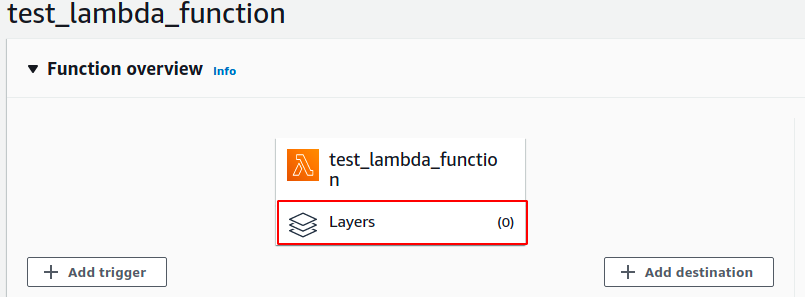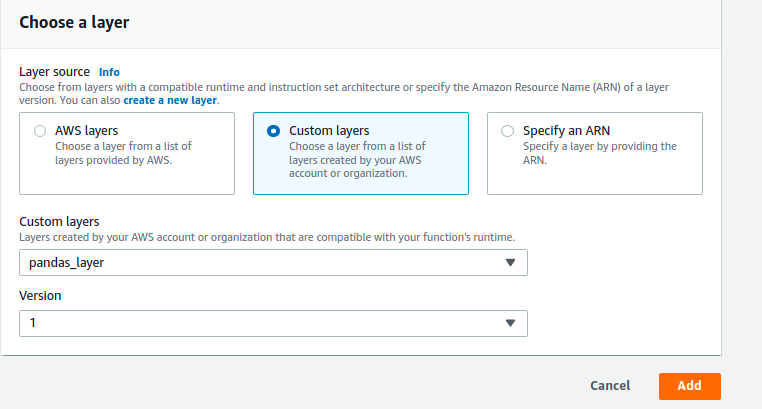How to use pandas in AWS Lambda
pandas is an open source library providing high-performance,
easy-to-use data structures and data analysis tools for the
Python programming language. pandas library is by
default not available in AWS Lambda Python environments. If you try to
import pandas in aws lambda function, you will get below error.
import pandas
def lambda_handler(event, context):
return {
'statusCode': 200,
'body': json.dumps('Hello from Lambda!')
}
# Output
Response
{
"errorMessage": "Unable to import module 'lambda_function': No module named 'pandas'",
"errorType": "Runtime.ImportModuleError",
"requestId": "a9dfd983-8cd6-4fe2-85c3-5e107ac230a4",
"stackTrace": []
}
For using pandas library in Lambda function a
Lambda Layer needs to attached to the Lambda function. This
tutorials lists the required steps for creating and attaching Lambda Layer
for pandas module.
Note: Step 1 to Step 6 needs to performed on EC2 instance which uses the
same Amazon Linux version as AWS Lambda to have proper dependencies.The
steps for this tutorial as are performed with Python 3.9.7, to follow
the steps make sure you are using Python 3.9.7
Step 1: Create Python Virtual Environment
python3.9 -m venv test_venv
Step 2: Activate Virtual Environment
source test_venv/bin/activate
Step 3: Check Python Version
python --version
Step 4: Create directory with name python
mkdir python
Step 5: Install pandas library in
python directory created in Step 4
pip install pandas -t python
Step 6: Zip python directory
zip -r pandas.zip python
Step 7: Login to AWS account and Navigate to AWS Lambda Service.

Step 8: In AWS Lambda select Layers from Additional resources.

Step 9: Click on create layer, enter the required information.
- Name: pandas_layer
- Description: Lambda layer for pandas module
- Select Upload a .zip file, click on upload and choose pandas.zip created in Step 6
- Compatible architectures - optional: x86_64
- Compatible runtimes - Choose run time as per the python version from output of Step 3

Step 10: Click on Create
Step 11: Navigate to AWS Lambda function and select Functions

Step 12: Click on Create function
Step 13: Select Author from scratch
Step 14: Enter Below details in Basic information
- Function name: test_lambda_function
- Runtime: choose run time as per the python version from output of Step 3
- Architecture: x86_64
Step 15: Click on create function
Step 16: In the Function overview pane click on Layers or Scroll down to select Layers section

Step 17: Click on Add a layer

Step 18: Select Custom layers , choose layer created in Step 9, select version 1 and click on Add.

Step 19: Write below code in lambda function and click on Deploy
import logging
import pandas as pd
logger = logging.getLogger()
logger.setLevel(logging.INFO)
def lambda_handler(event, context):
logger.info(pd.__version__)
Step 20: Click on Test, enter any name for Configure test event and click on create

Step 21: Click on Test again, you should see pandas version in the output.

If you don't want to create you own layer than you can directly use lambda layers from this link.
Category: AWS
